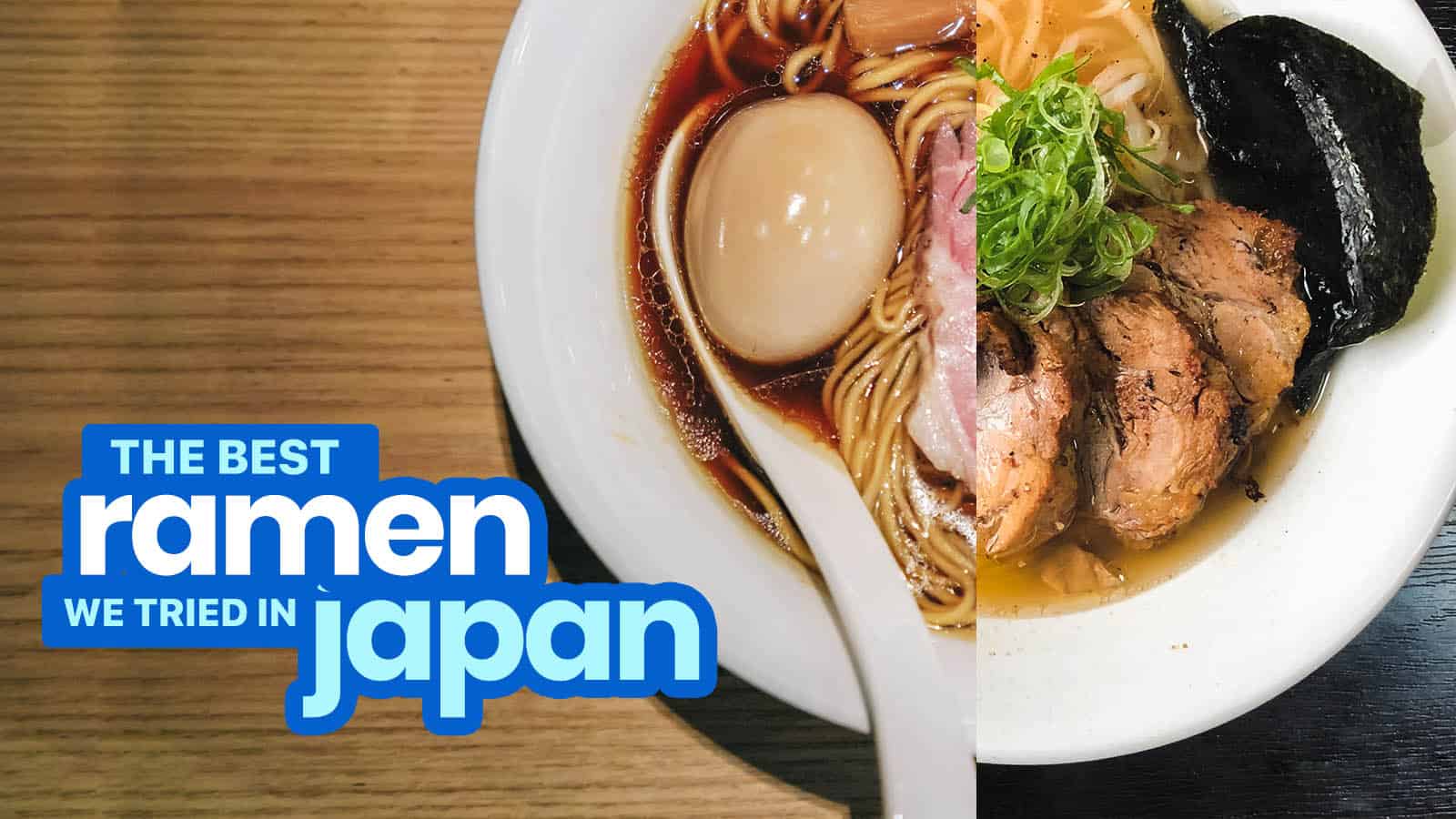Thou shalt not leave Japan without enjoying ramen.
If there were a commandment about traveling to Japan that I have followed religiously, that would be it. Regardless of which part of Japan I am visiting, I never leave the country without stuffing my flabby face with ramen.
The history of ramen can be traced back to China’s wheat noodles, which was introduced to Japan by immigrants in the late 19th century. The Japanese embraced it, put their own spin to it, and owned it. Today, ramen is Japan’s quintessential comfort food. Not only does it represent how much the locals love food, it also shows how seriously they take cooking as an art form — the hard work, discipline, and creativity that goes into every bowl.
On top of that, ramen also reflects the physical and cultural landscape of the place. Almost every prefecture has their own version, depending on the the local taste, availability of ingredients, climate, and external influences. In this post, we’re compiling some of the ramen types that seared a mark on our minds.
(Disclaimer: My palate tend to favor rich, bold taste profiles. I’m not really into lighter flavors.)
My Personal Favorites
1. Tottori Gyukotsu Ramen
Without a doubt, our favorite ramen is gyukotsu ramen, the signature style of Tottori prefecture.
Tottori is a little-known destination, at least among foreign travelers. But this underrated prefecture in the Chūgoku region has a rich culinary tradition. Some of Japan’s most popular dishes have their roots in Tottori. It is where the idea of shabu-shabu was born and where the tastiest crabs and shrimps are caught.
While the rest of the world is in love with tonkotsu ramen, whose broth is made from pork bones, Tottori uses cattle bones in their gyukotsu ramen. We have been to almost 30 prefectures so far and only Tottori uses this ingredient as base for their broth. It’s rare, yes, but not exactly surprising, given the prefecture’s affinity with beef. It is also home to Tottori beef, believed to be the precursor to other celebrated beef brands like Kobe beef and Matsusaka beef.
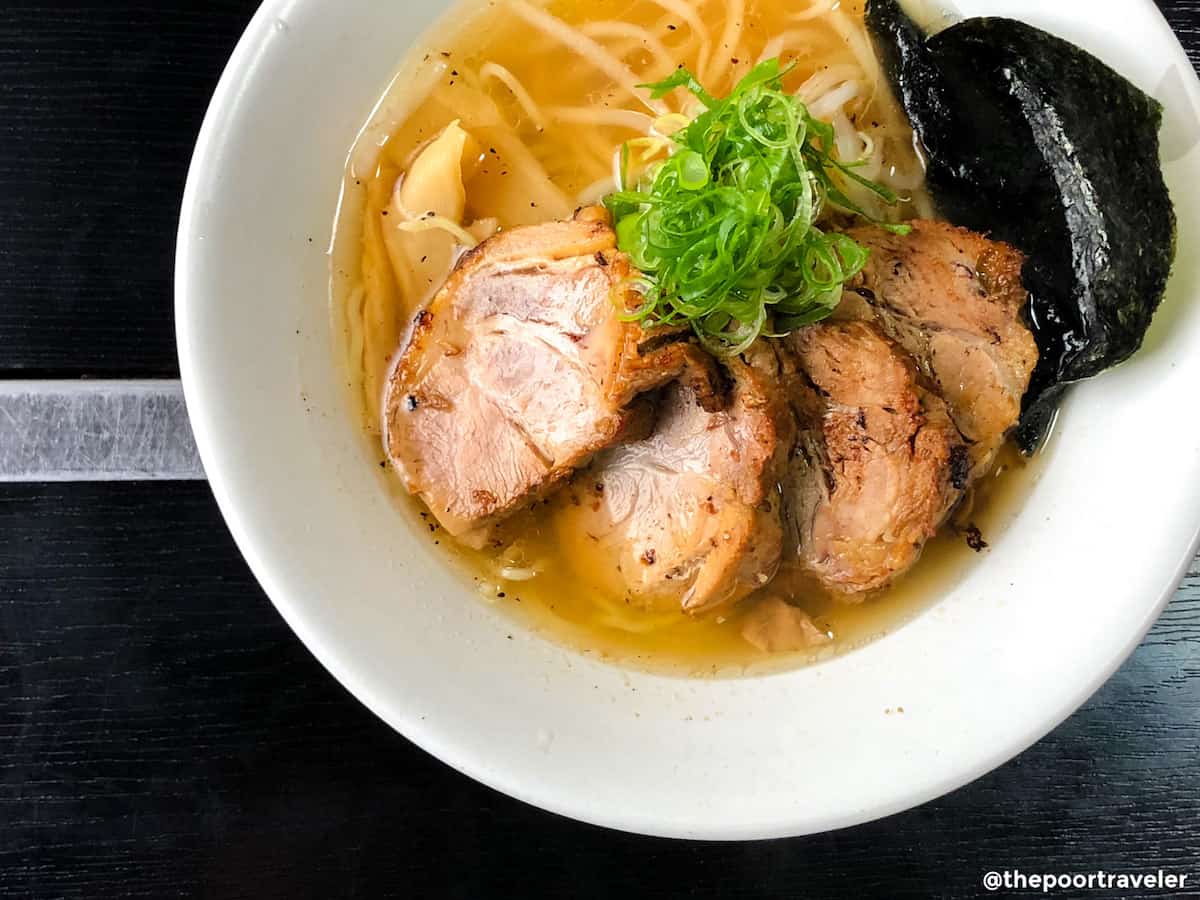
We have tried this twice — at Takauna and Hachibee in Kurayoshi City — and these are the two best bowls of ramen we’ve ever had. Takauna uses 100% cattle bone in its broth, accented by rock salt. Each spoonful launches an explosion of flavor that had me craving more. Each bowl of firm wavy noodles is crowned with slowly cooked chashu (pork belly), nori (seaweed), bamboo shoots, and green onions. Both my teammate Asta and I finished the bowl in no time. The best part, it’s only ¥600.
At Hachibee, the ramen is topped with thick cuts of pork neatly and beautifully arranged. The beef bone flavor is undeniable but gentle, not overpowering but blending well with white shoyu. The smokiness of the big chunks of pork shoulder loin, barbequed to perfection, was definitely killer. Each serving comes with nori (seaweed), bamboo shoots, and green onions. And for only ¥800, this is waaay too good for its price.
✅ MORE INFO: WHERE TO EAT IN TOTTOR!
2. Kumamoto Ramen
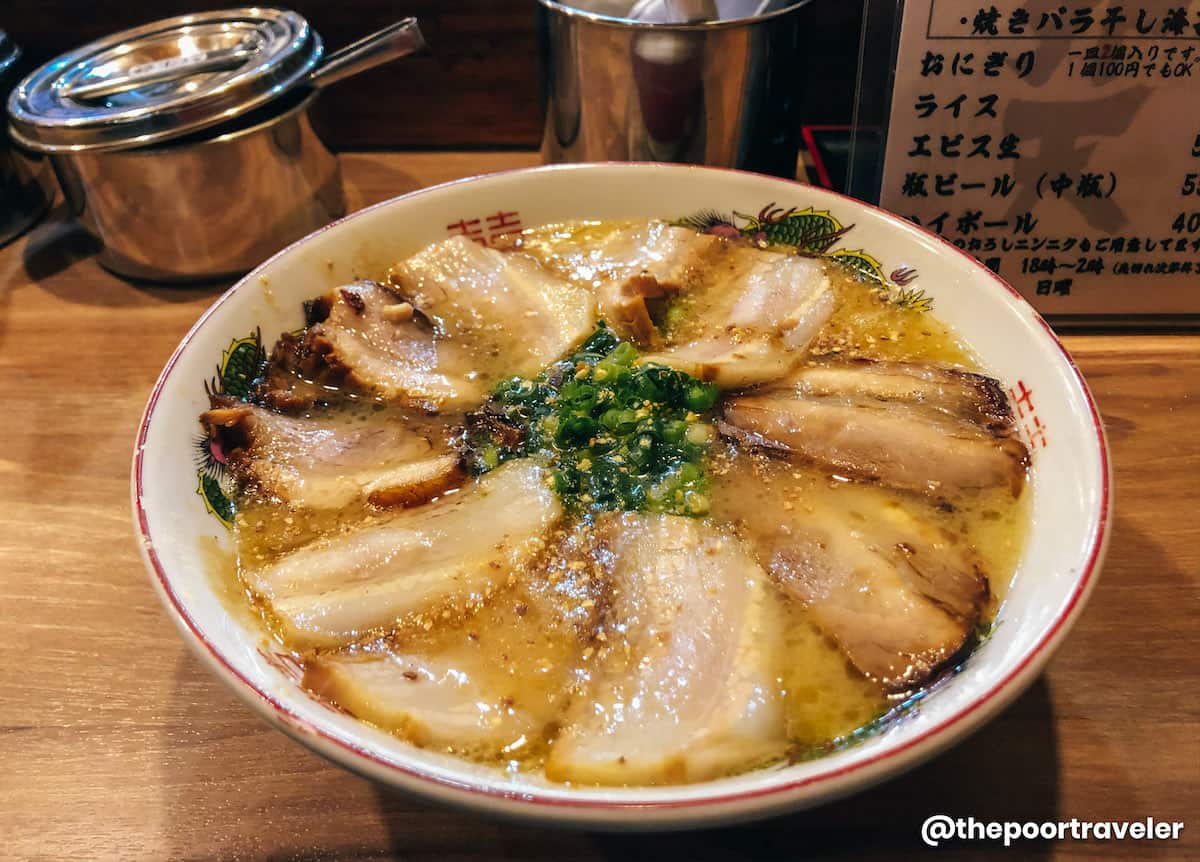
Kumamoto is one of the seven prefectures making up the southern island of Kyushu. The styles of this region mostly come from Kurume, where the original tonkotsu soup was invented. Tonkotsu literally translates to “pork bones”, which is boiled and simmered for hours. Its neighboring cities then adapted and had their way with it, creating a variety of specialties that are distinct from each other. In Kumamoto, that distinct quality can be summed up in a word — garlic. Lots of lots of it. And guess what, garlic is – without a doubt – the one spice I can’t live without.
Sure, other styles use garlic too, but Kumamoto goes crazy with it. Kumamoto ramen’s broth is usually assari, which means light and thin, mainly because it is often blended with chicken stock. But for a lighter-bodied bowl, Kumamoto ramen also packs a strong punch. Thanks to the generous servings of garlic, which may come in many forms: a layer of mayu (burnt garlic oil), sprinkles of fried garlic chips, or both. Regardless, it is this distinctly strong garlic taste that sets it apart from other ramen styles.
✅ MORE INFO: THINGS TO DO IN KUMAMOTO
3. Hakata Ramen
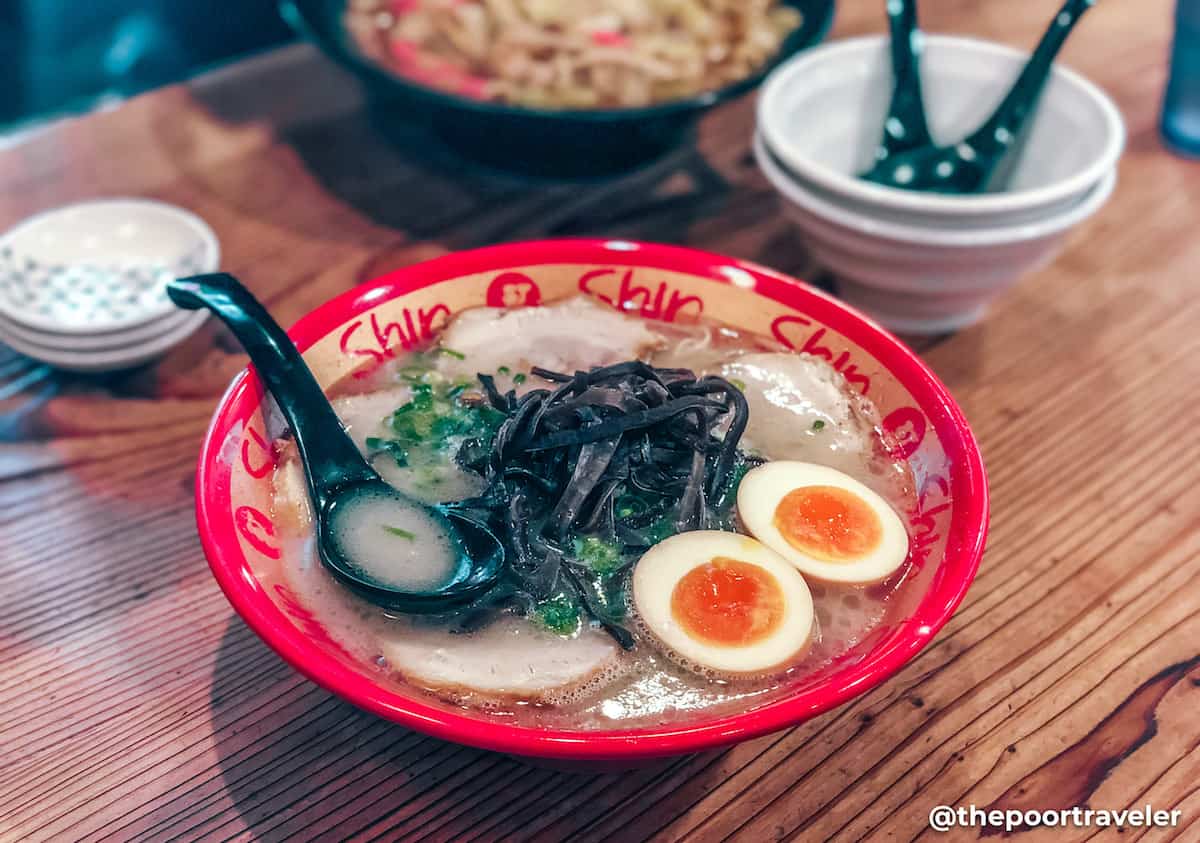
The first bowl of hakata ramen was served in the streets of Nakasu in Hakata, which is now part of Fukuoka City. Each city in Japan has their own version of preparing ramen, but Hakata-style tonkotsu ramen is undoubtedly the most successful, spreading not just around the country but around the globe.
Like Kumamoto ramen, Hakata ramen is an offshot of the original tonkotsu ramen created in Kurume. But Hakata’s take on it took it to another level. Hakata’s stock is often kotteri, which is rich, opaque, and sometimes frothy. It uses thin, firm noodles and is typically topped with green onions and slices of chashu pork. It packs a powerful dose of umami with every spoonful.
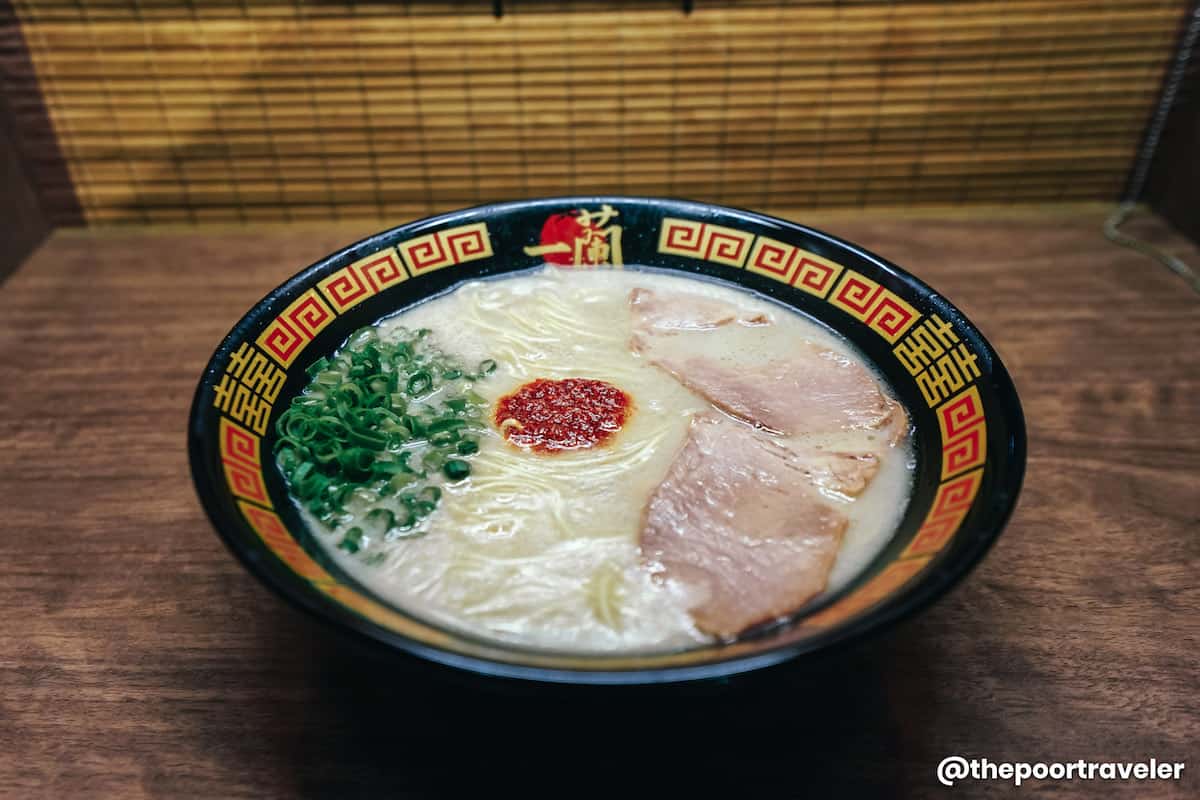
The world-famous Ichiran, with branches even in North America, has its roots in Hakata. You’ll also find widely respected ramen bars like Shin-shin, Anzen Syokudo, and Ramen Kobo Ryu. And of course, it is also served at many yatai stalls throughout the city.
At Shin-shin and Hakata Issou, I noticed that it also has a very subtle bitter aftertaste, which prevents the porky flavor from being too overpowering.
✅ MORE INFO: WHERE TO EAT IN FUKUOKA!
4. Sapporo Ramen
In Sapporo, the signature is miso ramen, which taps the magic of miso paste, made by fermenting soy beans and blended with chicken stock or dashi (fish stock). Sometimes, chili paste is added to deliver a spicy kick that is very welcome in long Hokkaido winter.
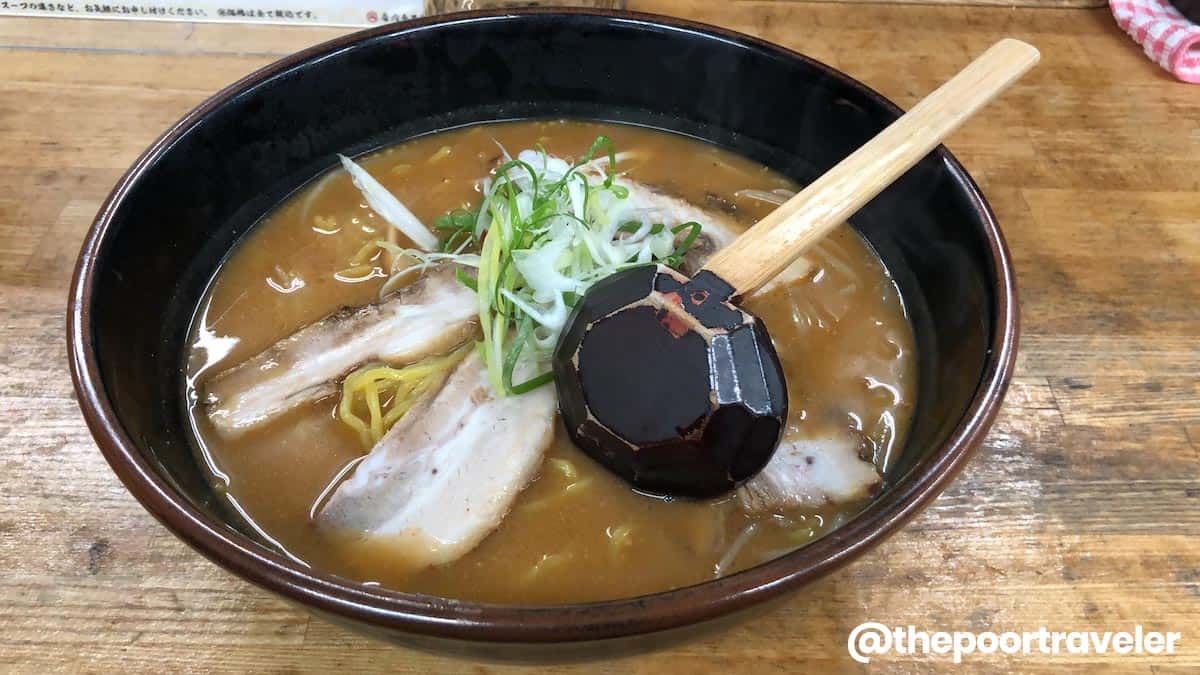
When I asked locals where to find the best miso ramen in the city, they pointed us to Ramen Shingen. And if the queue outside is any indication, it may really be one of the most popular ramen bars in Sapporo. Considering that we were there just before midnight and in freezing weather, the place was packed with locals. In fact, after falling in line outside, we stepped inside and, whoa, there was still a line. Haha. There were only 12 seats, so you should really expect to wait.
Ramen Shingen’s spicy miso bowl is called Echigo, which cradles chewy, curly noodles topped with chashu and kakuni. The richness, flavor strength, and even the piquancy were perfect. Despite the giant serving, we were able to slurp every last strand of the noodles and every last drop of its broth.
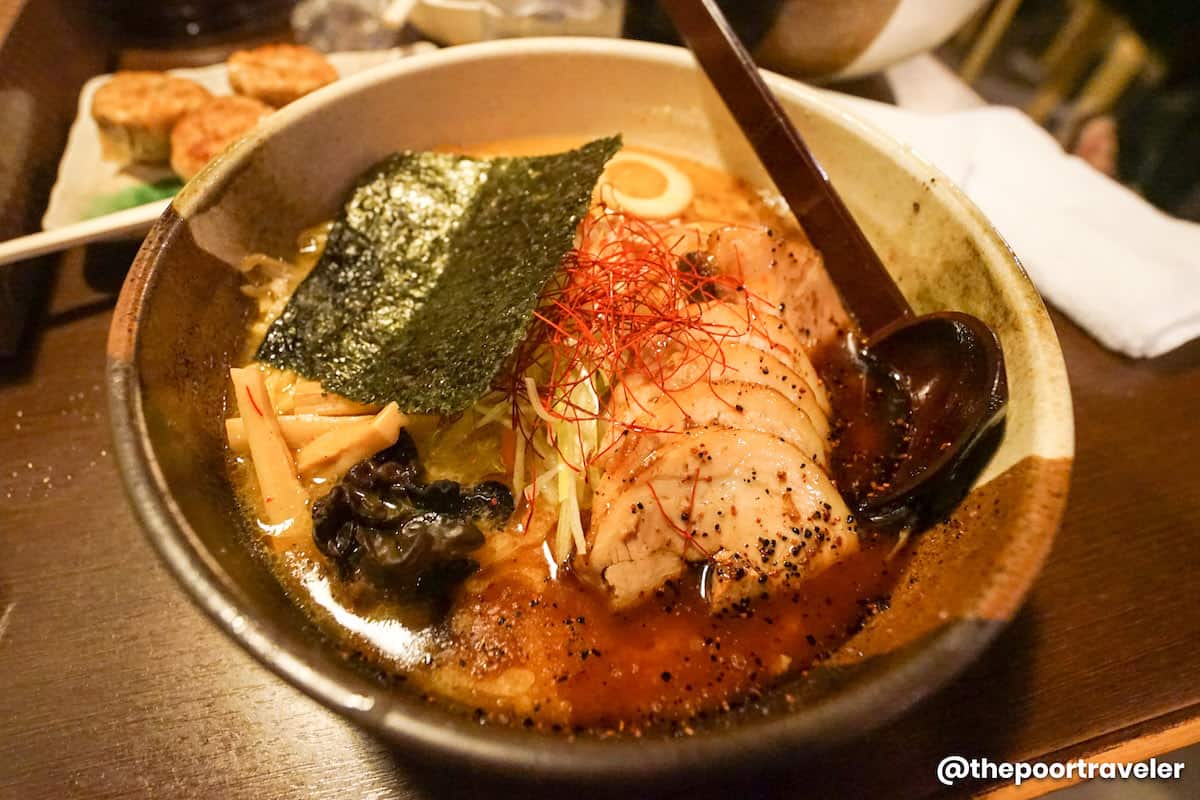
This may be an unpopular opinion, but I had my best miso ramen at a bar called Shirakaba Sansou at Sapporo Ramen Kyowakoku (aka Ramen Republic). It also has similar wavy noodles, but adorned with nori, bamboo shoots, ajitama (egg), chashu (pork), garlic oil, and black pepper. The broth is so rich that the miso is the obvious star of this bowl, and it works perfectly with the rest of the ingredients. And like I said, I’m a bit partial to anything with a strong garlic flavor, so… there.
✅ MORE INFO: WHERE TO EAT IN SAPPORO!
5. Classic Tokyo Shoyu Ramen
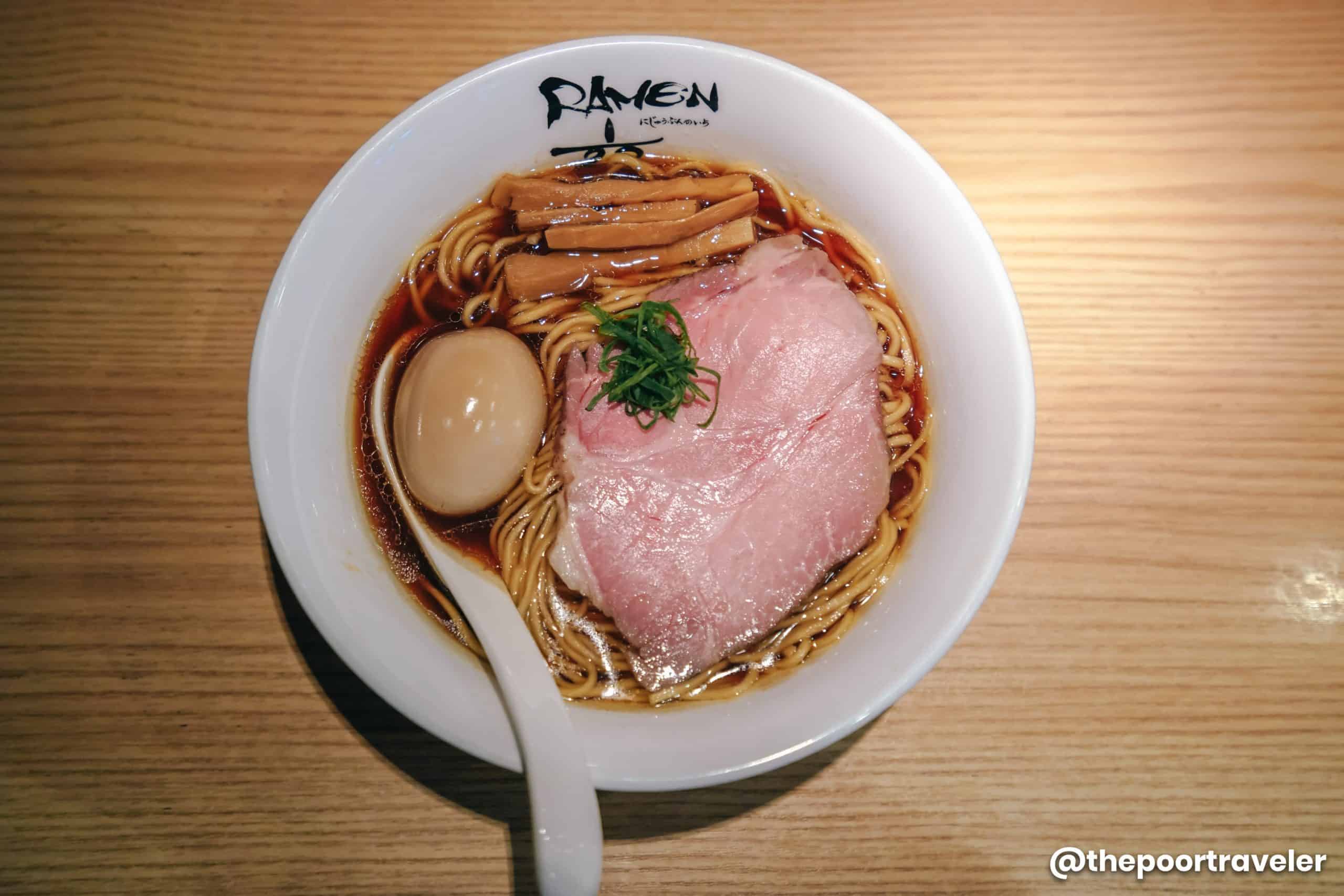
As Japan’s capital, Tokyo’s restaurant scene is wild, vibrant, and incredibly diverse. Whatever type of ramen you crave, you’ll probably find a bar offering that somewhere in the city. But Tokyo’s traditional style is not to be pushed aside.
The classic Tokyo ramen is simple but surprising. Its clear, light-bodied broth has a chicken or pork base mixed with traditional dashi and shoyu. Drowning in it are wavy noodles, topped with chashu. One of the best bowls we had in Tokyo is served by Ramen 1/20 (Ramen Nijubunnoichi), featured on the Michelin Guide a few times. Although they specialize in their shio ramen, their shoyu version has less subtle flavors that feels smooth and light. Each serving is plated cleanly but meticulously — a whole ajitama resting on the spoon and a slice of pink chashu.
✅ MORE INFO: TOKYO TRAVEL GUIDE!
6. Yuzu Ramen
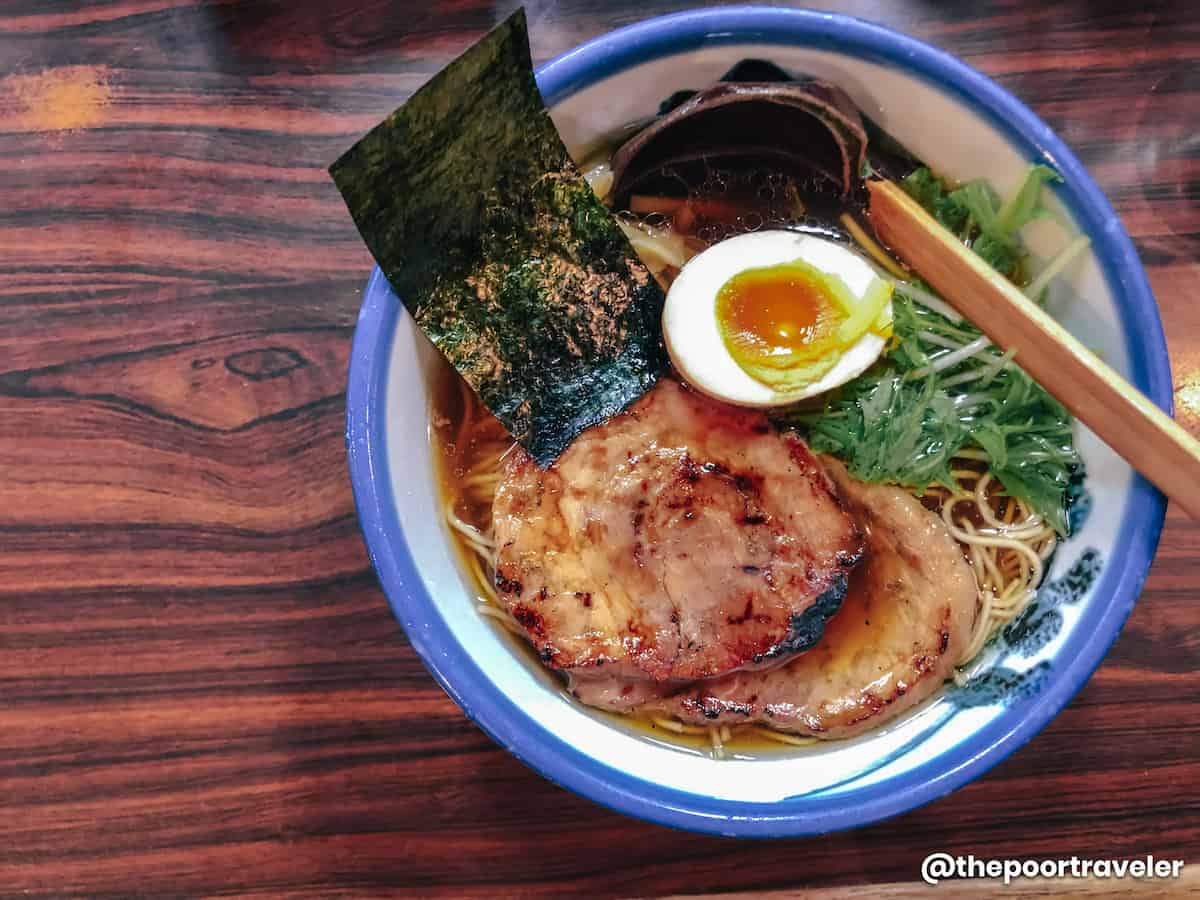
What makes ramen successfully take Japan and the world by storm is its openness to interpretation. Anyone can make a few changes here and there and call it their own. No wonder almost every prefecture has their own version, and every restaurant has their own guarded recipe. It also paves the way for innovation.
One of our most unforgettable bowls is Afuri’s yuzu ramen, which incorporates a touch of citrus to the tried-and-tested shio and shoyu concoctions. Similar to lemon, yuzu is widely used in Japanese cuisine but not so much on ramen. But Afuri’s yuzu ramen perfectly adds a bright burst of citrusy tang that perfectly complements the savory combination of the broth, chashu, ajitama, and mizuna leaves. It’s a refreshing take on the ramen!
Other Remarkable Ramen
Hiroshima ramen
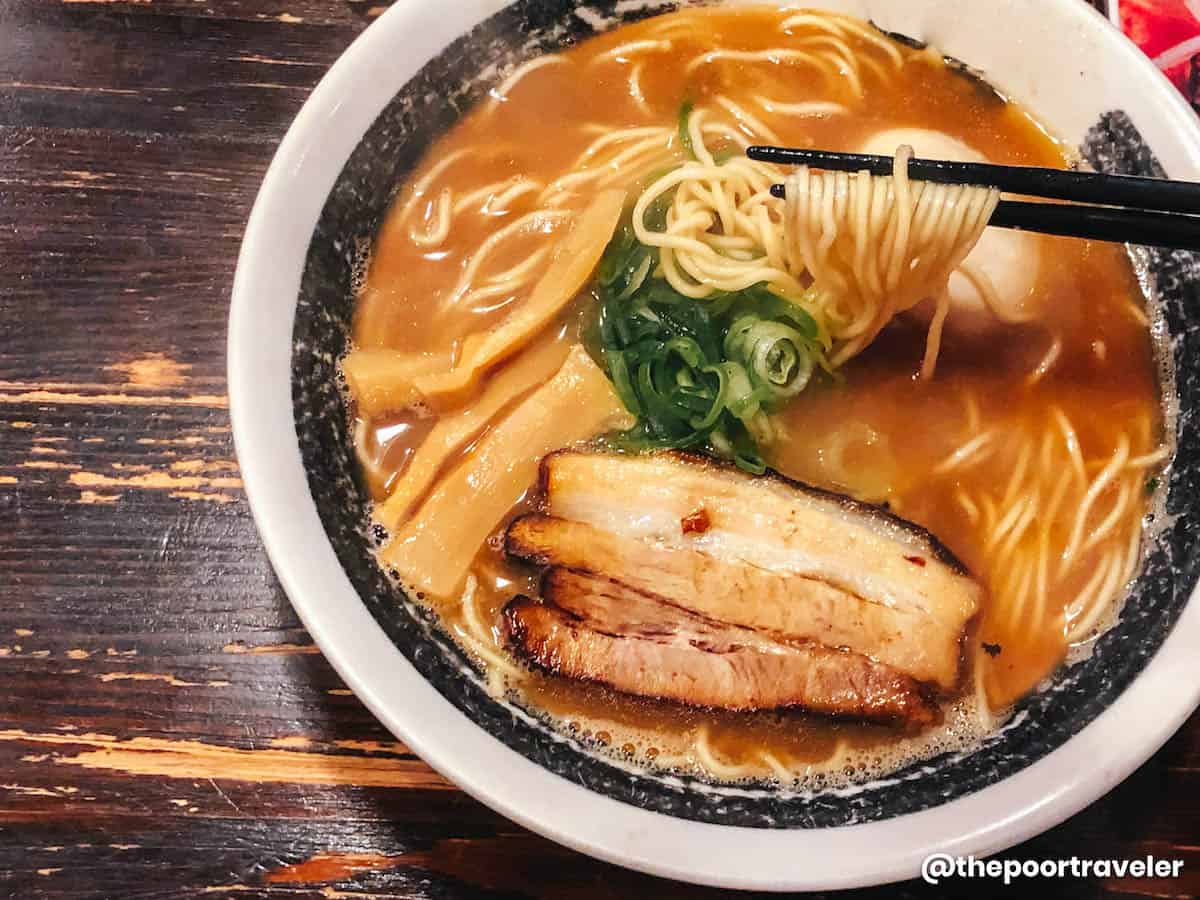
Hiroshima’s own take on the good old ramen is the middle ground between the subtlety of Tokyo’s shoyu and the richness of Kyushu’s tonkotsu ramen. Its broth is thinner than Hakata, perhaps because the pork bone base is also blended with vegetable and chicken stock. It also uses medium thin noodles. One thing I noticed is that many shops offer a spicy, peppery version.
Aside from the noodle soup, Hiroshima also serves the “shirunashi tantanmen” or the soupless dan dan noodles. Instead of broth, it normally has chili oil, fried ground pork sauce, and pepper mixed with thin straight noodles.
✅ MORE INFO: HIROSHIMA TRAVEL GUIDE!
Onomichi Ramen
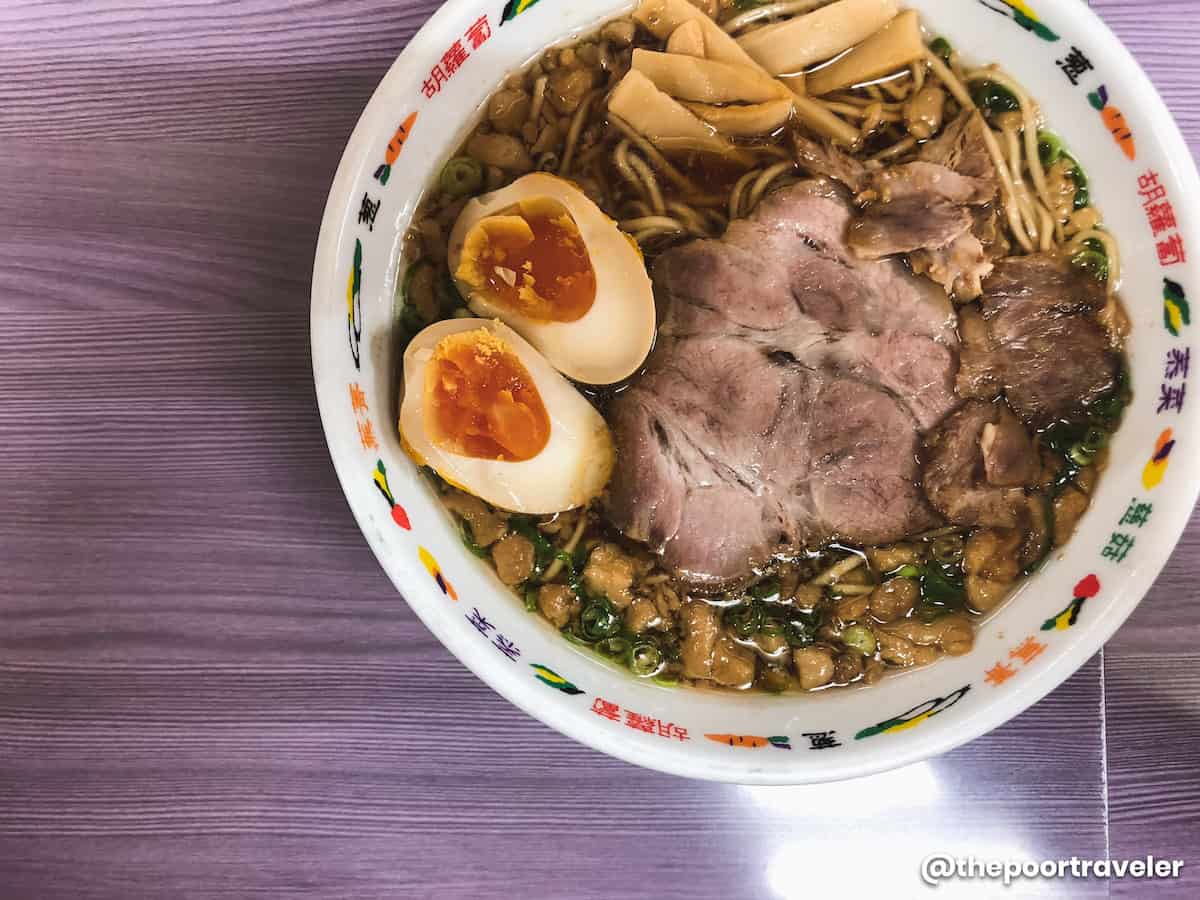
Although Onomichi is a city within Hiroshima Prefecture, its ramen is way out there. Onomichi-style ramen is the ultimate comfort food. It’s light but sinful at the same time. Light because its broth is shoyu-based mixed with fish paste and chicken extracts. Sinful because floating on top are bits of fat (seabura), an ingredient that this type of ramen has been particularly known for. Onomichi ramen also uses flat noodles.
✅ MORE INFO: ONOMICHI TRAVEL GUIDE!
Takaida Ramen
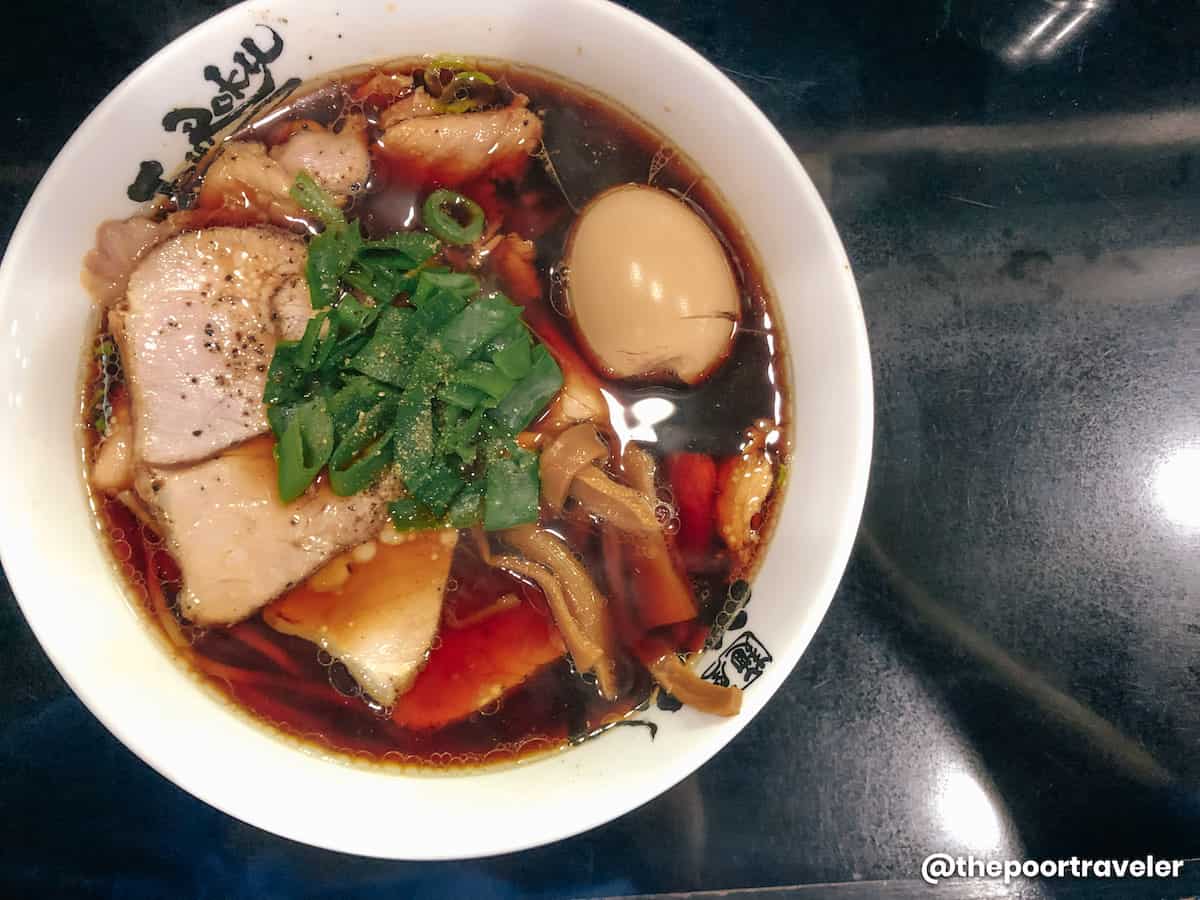
Takaida is an area peppered with ramen bars in Osaka’s Higashinari ward. Traditionally, Takaida-style takes thick noodles and drowns it in a light-bodied broth, which is a blend of chicken, kelp seaweed, and shoyu.
In Dotonbori, a shop that specializes in Takaida-style ramen is Menya Joroku (Menya Jouroku). Its best-seller is chukasoba (¥700), characterized by its deep dark broth, made with chicken stock and black soy sauce. Most reviews say that despite its color, it is surprisingly light. I beg to differ: I find it a bit on the heavy side. It has an intense salty flavor with a tinge of sour. That’s not a bad thing for me because like I said earlier, I like strong, rich profiles. Each serving is topped with slices of roasted pork, chopped scallions, bamboo shoots, and a dash of black pepper.
✅ MORE INFO: WHERE TO EAT IN OSAKA!
Takayama Ramen
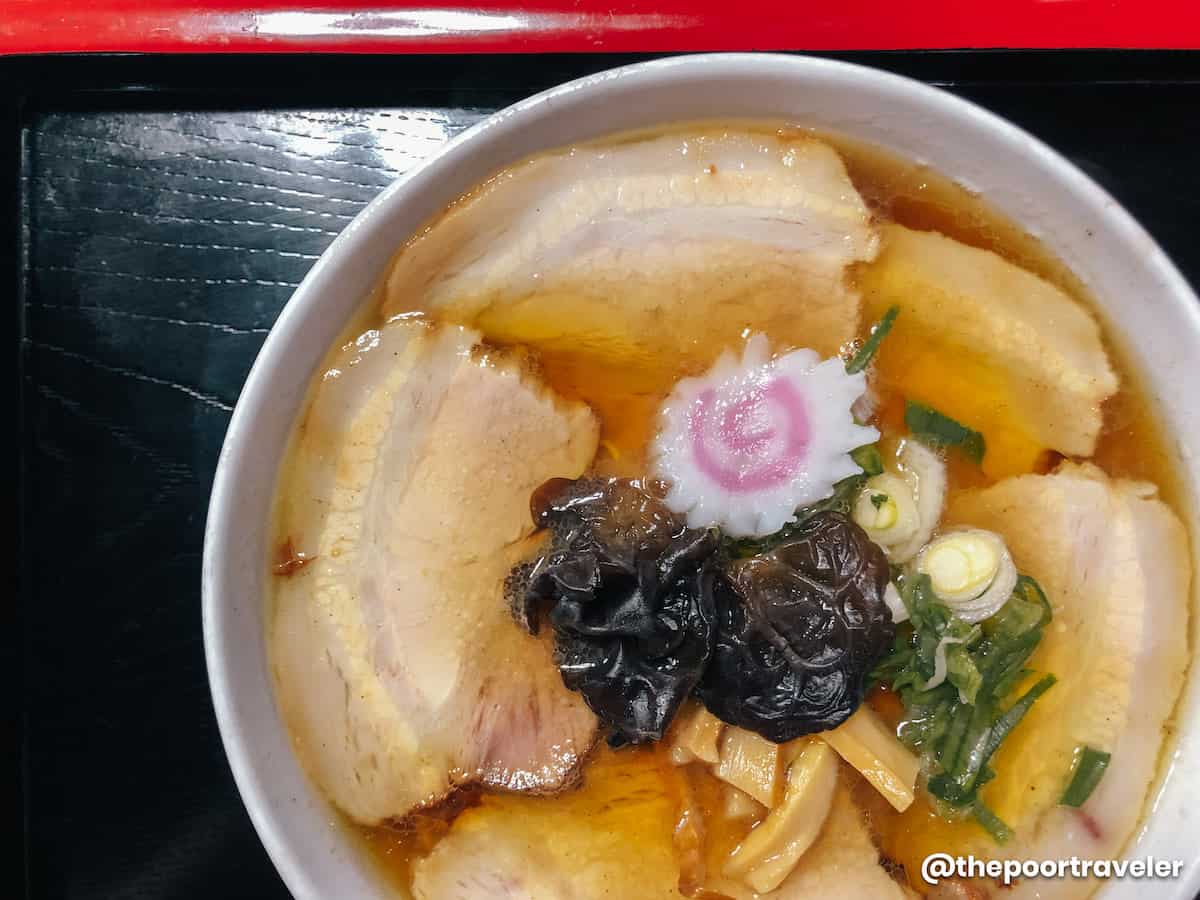
Takayama ramen (or Hida-Takayama ramen) is another clear, light version. Its broth is made from chicken bones blended with shoyu, dashi, vegetables and mirin, a condiment similar to sake but with higher sugar and lower alcohol content. Swimming in the light, tasty soup are thin, curly noodles, grilled pork, bamboo shoots, and leeks.
✅ MORE INFO: TAKAYAMA TRAVEL GUIDE!
Bonus: Nagasaki’s Champon
I’m not sure whether or not I should include this because I don’t know if this is still within the ramen realm, but whatever.
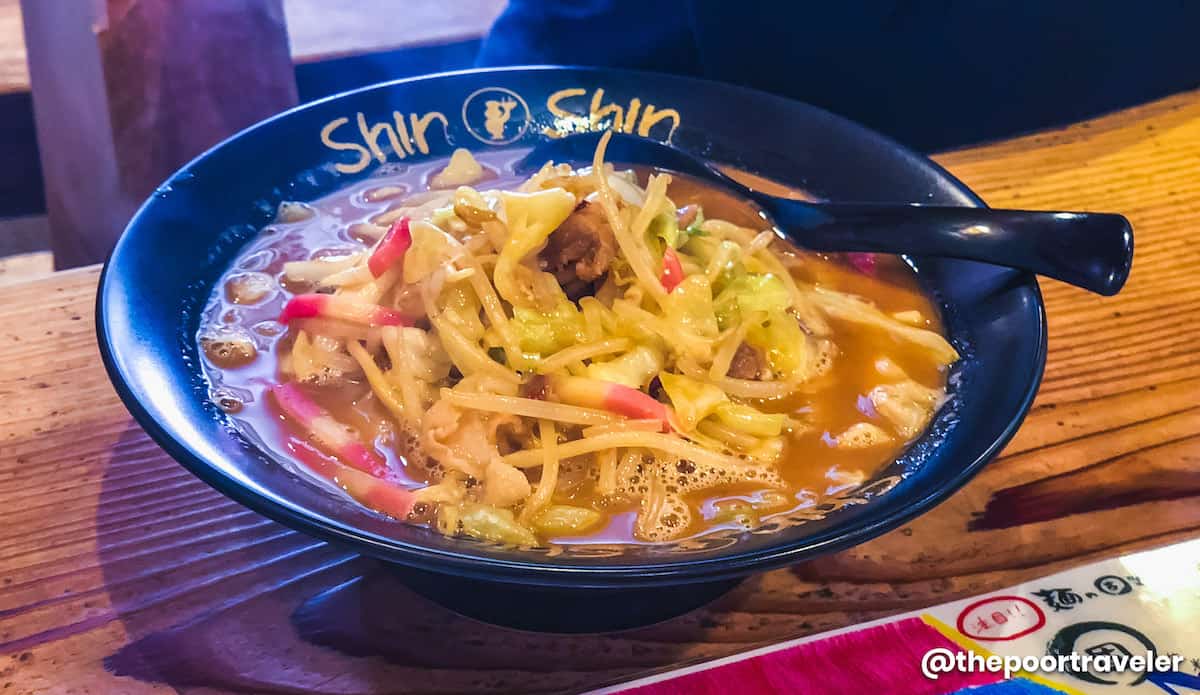
Champon is Nagasaki’s signature noodle soup dish. It also uses ramen (pulled noodles), but they’re thicker than usual. The broth, made with pig and chicken bones, is also thicker in consistency — creamy, almost milky — but lighter in taste. Every bowl also comes with generous helpings of various vegetables and seafood, usually shrimp and squid. Other types of meat like chicken or bacon are sometimes added.
Champon’s origins can be traced back to a Chinese restaurant called Shikairō, which is believed to have created champon in 1899 to cater to the Chinese students looking for cheap but filling comfort food. The restaurant still operates to this day and even has an attached Champon Museum. You can find it near the Oura Church.
✅ MORE INFO: WHERE TO EAT IN KYUSHU!
2020 • 4 • 22
